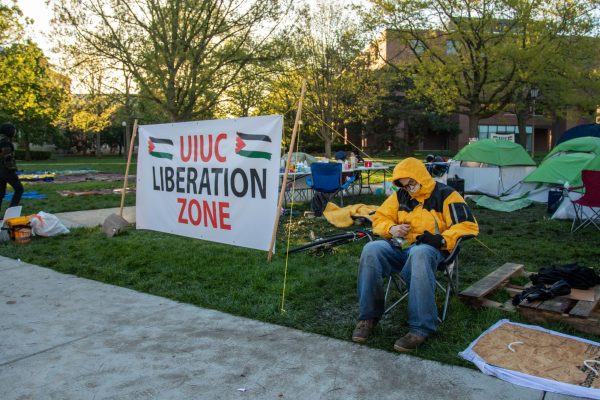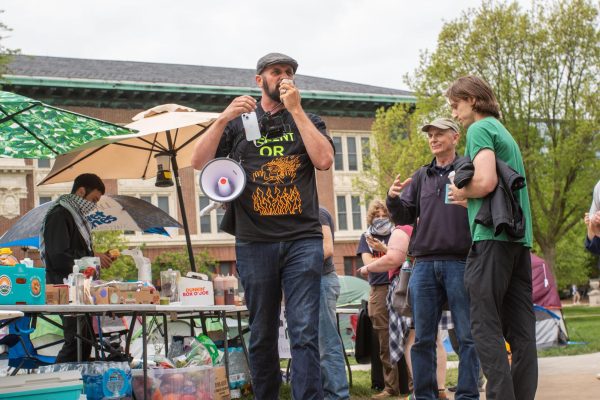Uncovering a 139-year-old mystery
September 18, 2006
Click here to view this slideshow
Without headstones or grave markers, the overgrown, brush-covered lot did not look like a cemetery – but while searching for the casket of Civil War veteran Clark Smith, archeologists were shocked to discover twenty caskets in Kane County.
Nineteen of the coffins are now at the University under the care of the Public Service Archeology Program through the Department of Anthropology.
Two-and-a-half years ago, Mel Magnuson of Elburn, IL asked the Kane County Genealogical Society if they knew of a burial ground in section 3 of Aurora Township. He remembered seeing a tombstone with the name of Clark Smith when he was a high school student in the 1950s.
Linda Eder, committee chairman of the Kane County Genealogical Society, began researching after Magnuson contacted her, but no records of a burial site were found. The tombstone has been gone since the 1970s, and the whereabouts of the cemetery was unknown.
Get The Daily Illini in your inbox!
Records show that Clark Smith served in the 52nd Illinois Infantry, a volunteer division, for three years during the Civil War and then reenlisted for another year. He was actively in battle much of the time, including in Sherman’s March to the Sea, said Eder.
In December 1867, two years after Smith completed his service, his wagon became stuck on some railroad tracks and was hit by a train. Smith died five days later, and his wife spent $55 on a metallic casket.
“This was very unusual, since most funeral expenses at the time ranged from $3-5,” Eder said. “This was a huge investment for a woman who had no money.”
The casket was expected to be located somewhere on Smith’s farm, but was instead found on his father-in-law’s nearby farm.
Following Illinois state law, archeologists dug in a 15-foot radius around the grave. To their surprise, they discovered three more caskets that day. The digging continued until a total of 20 caskets were found, 19 of them wooden and one of them metal, said Jodi Blumenfeld, project skeleton analyst and graduate student at the University. “(Digging up the caskets) created a lot of hard feelings,” Eder said. “People were disturbed that a cemetery was being disturbed – but not knowing a cemetery was there is what’s disturbing to me.”
Due to the smell resulting from poor embalming techniques at the time, the metal casket has a window for viewing purposes at the wake, Eder said. The window is covered by a piece of cast-iron, however, which will not be removed unless Smith’s next of kin are found. Although numerous historical documents and information from local residents suggest that the person in the casket is Clark Smith, no one can be 100 percent certain unless the window is opened, Blumenfeld said.
The metal casket remains at the Kane County Coroner’s Office. The rest of the bodies, which are completely skeletonized, are being examined by the Department of Anthropology at the University.
“We’re analyzing the bones for information about age of death, gender, pathology and trauma – any information that will allow us to make some sort of identification,” Blumenfeld said.
A skeleton can be identified as male or female based on the shape of the pelvis; age can be determined by dental development; and problems such as iron deficiency or osteoporosis become evident by looking in the bones.
The goal, Blumenfeld said, is to come as close as possible to finding some form of identification for all of the bones so the next of kin can be traced.






